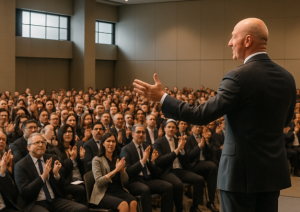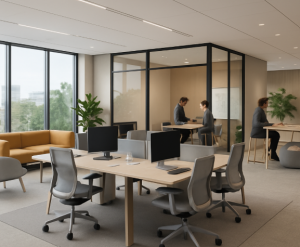Hybrid Captive – Building Capabilities Beyond GCCs
Published on
The pandemic has disrupted the business operations, and become a launching pad for companies to go virtual, digital-first, and agile. To succeed in the post-COVID digital landscape, CIOs/CDOs have started to think broadly and look at building global teams in talent-rich locations to support their digital transformation efforts.
Even though the business focus varies across industries, the technical skills they require to fulfil their digital goals are generally similar across the board. These include artificial intelligence (AI), IoT, AR/VR, RPA, mobile engineering and machine learning – skills that are largely in demand because they touch upon multiple aspects of building a successful business in the digital era. In light of this sudden need for talent that has context and commitment to the transformation journey, enterprises are increasingly looking at establishing Global Capability Centres (GCCs).
But that alone won’t do the trick. Organizations will need to develop a balanced mix of employees and technology partners building capabilities that otherwise take time to organically build up. This is leading to an increased adoption of the ‘Hybrid Captive’ model.
‘Hybrid Captive Centers’ or ‘Hybrid GCC’ isn’t a new concept; it’s just that they have now become mainstream. Simply put, it is the vehicle through which this transformation can be delivered and sustained. Hybrid Captive goes beyond just virtualizing workforces. It integrates a strong technology foundation to lead and motivate a virtual, distributed workforce with market-proven co-creation methodologies, and virtualized methods and practices that are enhanced with Artificial Intelligence (AI) and extreme automation.
The role of technology/platform partners in a Hybrid Captive Center
Technology/platform partners help with agility, scale, critical expertise and bring in capabilities in new or emerging areas of technology, tools and processes. It is not necessary that a company builds a new capability on its own. There is benefit in leveraging the expertise that exists in partnership. For example: consider the breadth and depth of services and support a cloud partner like Google brings to the table – they enrich the captive to enable new capability builds and help accelerate the maturation of capabilities.
The technology partners can also bring a few other things to the table:
- To begin building or maturing a capability, you need talent in scale. The partner can provide skilled, knowledgeable talent to supplement or seed the team while a company is hiring its own resources and onboarding them to the strategy.
- By offering ready talent and/or seed teams (at scale), companies can move and function faster than they would otherwise be able to do in hiring resources one at a time.
- In building capabilities, one often needs to ramp up talent or skills in an area that they may not need at the same scale later. The partner can provide the flexibility to manage the variability in the skills needed and help smooth over some of the ramp-up and ramp-down friction.
IBM, for example, has been supporting a Global Capability Center (GCC) in Bangalore through contingent talent for their transformational program. Due to the pandemic, the program was fast-tracked and needed an asset or a platform that would deliver value at speed and at scale. IBM, as the technology partner, positioned an Intelligent Workflow platform through which a proof of value was delivered and helped the GCC to build a scalable differentiated value solution to the enterprise.
In short, the role of the technology partner in a global captive center is to provide the resources, whether that be skilled talent, knowledge, tools, or processes to help companies accelerate time to value as they move along their digital journeys.
The many benefits of a Hybrid Captive
A captive centre is often preferred as it offers greater degree of control, reduces risk, gets access to talent at scale and helps future-proof the organization. In a Hybrid Captive model, the value of the captive remains intact and with the addition of partners, companies can increase the return across each of these areas.
In its simplest form, the hybrid model mantra is – “use employees where you should use employees and use partners where you need to use partners”.
Falabella Group is a great example of a global captive center that is capitalizing on the hybrid model. The company is the first Chilean conglomerate to establish a Global Capability Center (GCC) in India. Falabella is one of the largest retail platforms in Latin America, operating department stores, home improvement stores, supermarkets, real estate, and financial services across seven countries. Its GCC is a key strategic platform for the organizational growth, and drives the building of the company’s digital ecosystem while leveraging its existing unmatched physical assets.
To drive scale and innovation, Falabella operates in a hybrid model by hiring top talent and partnering with best of class technology consultants. This has helped the GCC build its technology capability and maturity across their digital platform and successfully raise the technology bar within the Group.
The hybrid model has also allowed Falabella India to hire the most-skilled talent across eCommerce and engineering as the work they are performing from their global capability centers is very attractive within the Indian technology labor market.
Choosing the right partner
Choosing a partner often requires an inordinate amount of due diligence, time, cost and energy coupled with experience and a comparative understanding of best practices. A technology partner like IBM or Google Cloud can lead the virtual and digital part of this transformation taking advantage of the GCC partner ecosystem being led by players like ANSR. ANSR’s partner ecosystem helps enterprises accelerate the performance and buildout of new business capabilities at scale. ANSR’s partners are leading global platform and solutions providers with expertise in digital technologies, cloud, automation, data and innovation.
By farming out non-core work, the Global Capability Centers (GCCs) can invest more effort in higher-profile tasks, as well as cut costs. On the flipside, though, projects being outsourced might involve smaller budgets and mundane tasks, so they might seem low priority to the service providers and may result in vendors assigning inexperienced workers to the projects. Therefore, the key to success in building capabilities and leveraging the Hybrid Captive model is balanced leadership that aligns the in-house team and technology partners so the two do not end up preying on each other.




